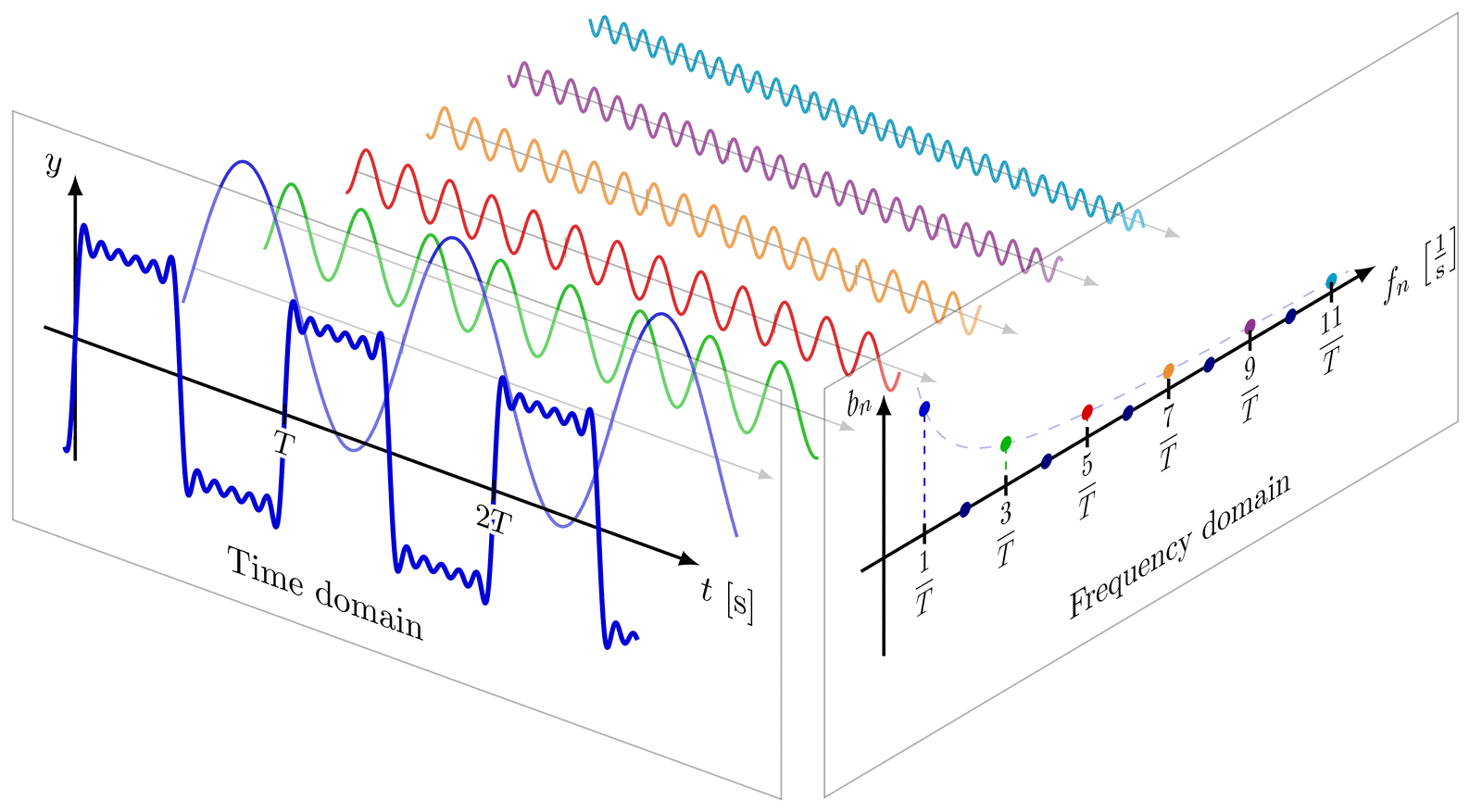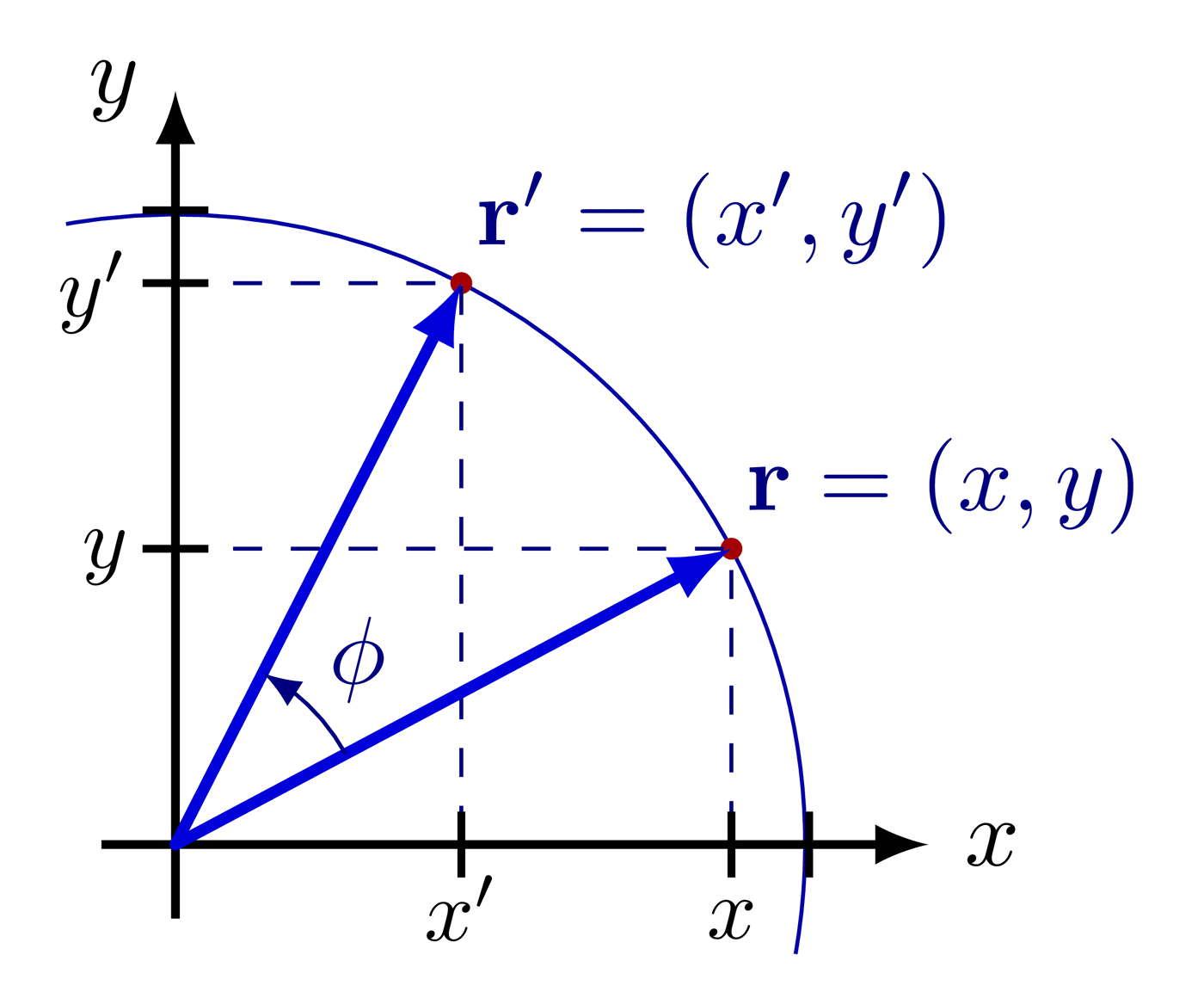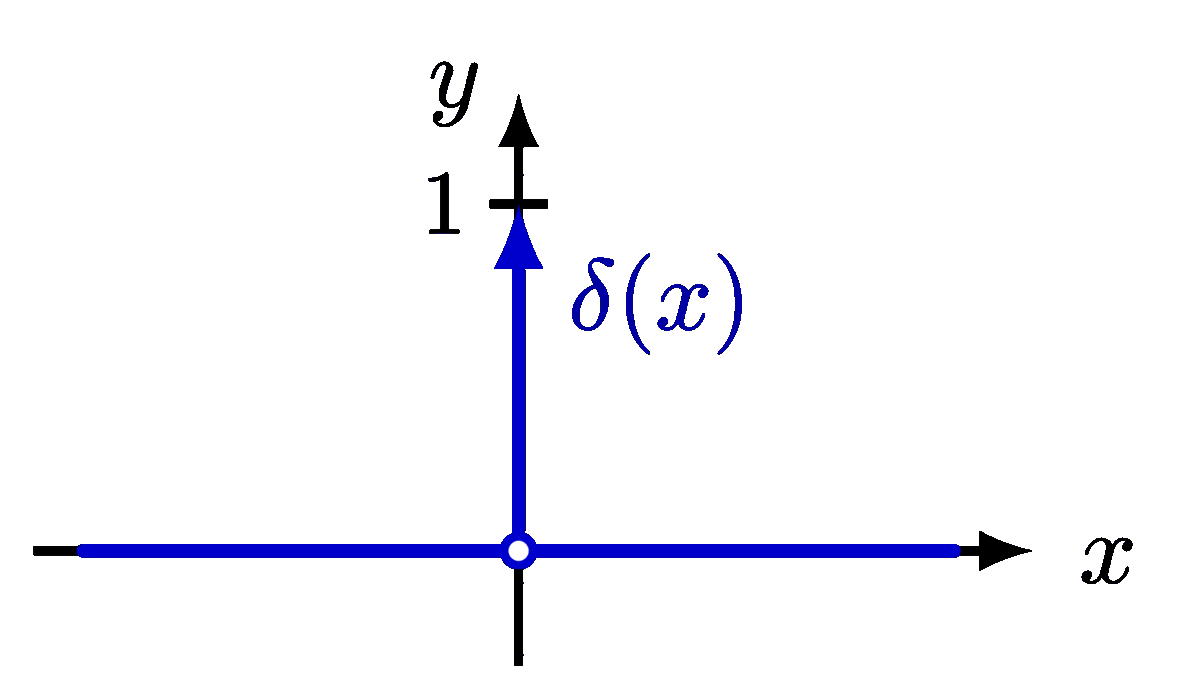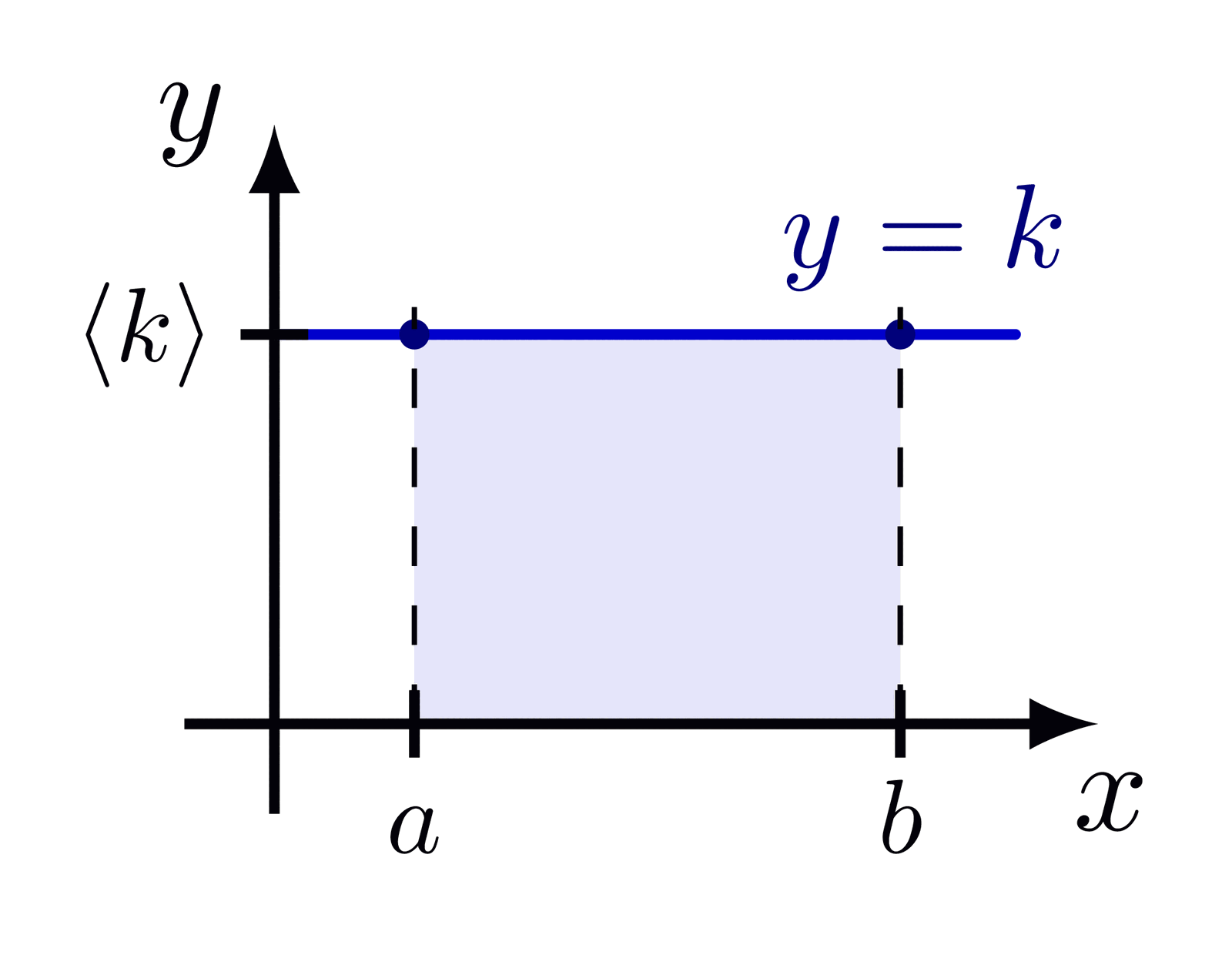A basic examples of the Fourier transform of a rectangular function.
For more Fourier analysis figures, please see the “fourier analysis” tag. These figures are used in Ben Kilminster’s lecture notes for PHY111.
Edit and compile if you like:
% Author: Izaak Neutelings (January 2021)% http://pgfplots.net/tikz/examples/fourier-transform/% https://tex.stackexchange.com/questions/127375/replicate-the-fourier-transform-time-frequency-domains-correspondence-illustrati% https://www.dspguide.com/ch13/4.htm\documentclass[border=3pt,tikz]{standalone}\usepackage{amsmath}\usepackage{tikz}\usepackage{physics}\usepackage[outline]{contour} % glow around text\usepackage{xcolor}\usetikzlibrary{intersections}\usetikzlibrary{decorations.markings}\usetikzlibrary{angles,quotes} % for pic\usetikzlibrary{calc}\usetikzlibrary{3d}\contourlength{1.3pt}\tikzset{>=latex} % for LaTeX arrow head\colorlet{myred}{red!85!black}\colorlet{myblue}{blue!80!black}\colorlet{mycyan}{cyan!80!black}\colorlet{mygreen}{green!70!black}\colorlet{myorange}{orange!90!black!80}\colorlet{mypurple}{red!50!blue!90!black!80}\colorlet{mydarkred}{myred!80!black}\colorlet{mydarkblue}{myblue!80!black}\tikzstyle{xline}=[myblue,thick]\def\tick#1#2{\draw[thick] (#1) ++ (#2:0.1) --++ (#2-180:0.2)}\tikzstyle{myarr}=[myblue!50,-{Latex[length=3,width=2]}]\def\N{80}\begin{document}% RECTANGULAR FUNCTION\def\xmin{-0.7*\T} % min x axis\def\xmax{3.0} % max x axis\def\ymin{-0.4} % min y axis\def\ymax{1.7} % max y axis\def\A{0.67*\ymax} % amplitude\def\T{0.31*\xmax} % period
Click to download: fourier_transform.tex • fourier_transform.pdf
Open in Overleaf: fourier_transform.tex







